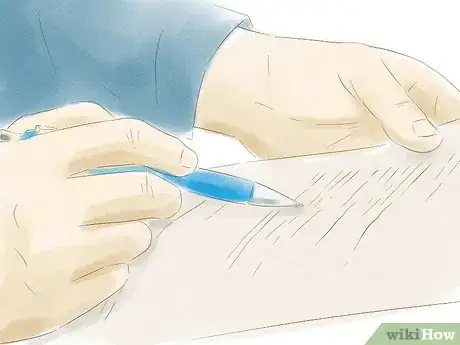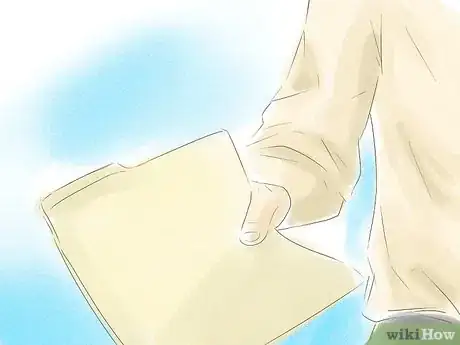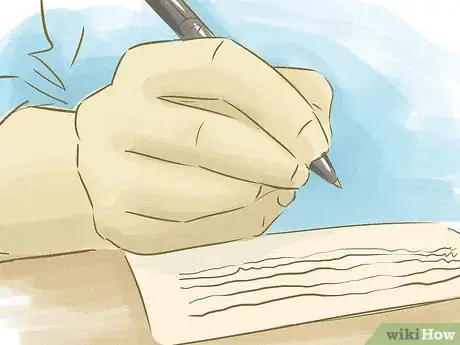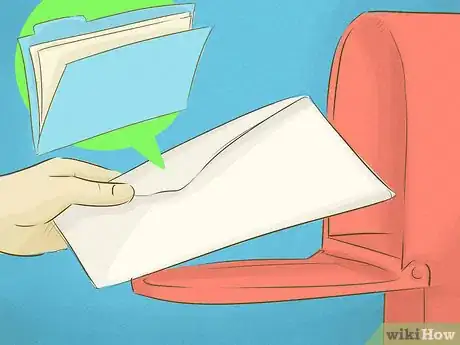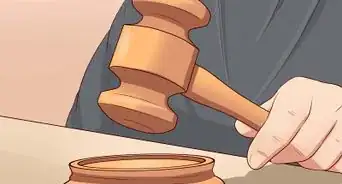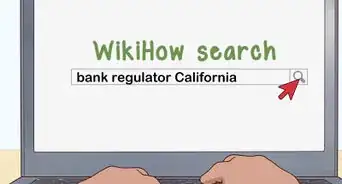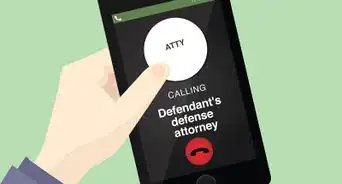This article was co-authored by Clinton M. Sandvick, JD, PhD. Clinton M. Sandvick worked as a civil litigator in California for over 7 years. He received his JD from the University of Wisconsin-Madison in 1998 and his PhD in American History from the University of Oregon in 2013.
There are 11 references cited in this article, which can be found at the bottom of the page.
This article has been viewed 22,074 times.
As part of the fact-finding phase of a lawsuit, the other side might send you requests to produce certain documents. This request is called a Request for Production. In addition to requesting documents, the other side might request to inspect or photograph other pieces of evidence. To respond, you first need to read each request and see if the document or object requested is in your possession, custody, or control. You then need to draft a written response in which you state what documents you will turn over and which ones you won’t.
Steps
Gathering Documents
-
1Read each request closely. You need to fairly respond to the request. This does not mean that you should volunteer information. However, you must fully respond to a request. For this reason, you should take your time to read each request closely so that you understand what is being requested.
-
2Check whether you possess the document. You have to make a diligent and reasonable search for the document or object requested.[1] Generally, this means you need to go through your filing cabinets and also search for electronic information on hard drives and disk drives.
- Remember, you have to turn over a document if it is in your custody or control. You might “control” a document even if it is not on your physical property. Documents being stored off site are in your control.
- Don’t blow off the Request for Production. If you hide documents, or don’t search diligently for them, then the judge can sanction you.
Advertisement -
3Gather documents. You should begin gathering responsive documents so that you can review them. You should review them in particular to see whether or not they are protected by the attorney-client privilege and whether they really respond to the request.
- Remember that you have a duty to preserve electronic documents as soon as you reasonably anticipate a lawsuit.[2] This means that you cannot go into your email and start deleting relevant emails in order to avoid turning them over.
- If you work in a business, make sure relevant people are notified to preserve documents that relate to the lawsuit. Send a letter to document custodians advising them to preserve documents, including information stored electronically.[3]
-
4Hire a vendor to help you access electronic information. If you work for a large company, then performing a thorough search for responsive documents could require going through all of your servers and downloading electronic information. You probably will have to hire an e-discovery vendor to help you do this. You should talk about the need to hire a vendor with your attorney.
- There are vendors available for small businesses or small cases with low discovery budgets. These include Acrobat Legal Edition, Discovery Cloud, and SafeCopy. Most lawsuits probably will not require extensive e-discovery, but it is best to identify whether yours does early in the case so that you can hire a vendor if necessary.
- You might also be able to object to a discovery request for electronic information on the grounds that the cost of getting the information is unduly burdensome.[4] For example, if electronic discovery costs are in the millions of dollars, then you could object that the costs outweigh the benefit of the information.
Drafting a Written Response
-
1Check the deadline for responding. Your Rules of Civil Procedure should tell you how much time you have to respond to the Request for Production. In federal court, you have 30 days unless both you and the requesting party agree to a longer or shorter deadline. The judge may also change the deadline.[5]
- If you can’t respond to the Request in 30 days, you should reach out quickly to the requesting party’s attorney and explain the situation.[6] Opposing counsel should be willing to work with you, provided you are being diligent in finding responsive documents.
- If the other side agrees to an extension, then get a written confirmation (such as an email).
-
2Look for response forms. Your court or a local legal aid organization might have created forms you can use to draft your responses.[7] Look on your court’s website or type “your state” and “respond to request for production.” Using these forms could make the process of responding easier.
-
3Format your Response. If no printed form is available, then you will have to type up your own. Open a blank word processing document and set the formatting so that the document resembles other documents submitted in your court case (such as the complaint or the answer).
- Also insert the caption information. This is the name of the court, the names of the parties, and the case number. You might also include the judge’s name. You can get this information from the first page of any document filed in your case.
- Title your document “Defendant Tim Stock’s Responses to Plaintiff Amber Smith’s Request for Production” or something similar.[8]
-
4Respond to each request. You need to go down through the Request and respond to each individual request. In some states, you have to type out the original request before including your response. Check your Rules of Civil Procedure.
- For example, you can respond to a request this way: “Request No. 1: Please produce a copy of your most recent driver’s license. Response No. 1: A copy of my Nevada driver’s license is attached to these responses.”[9]
- If you don’t have the document in your possession, then you could respond: “Response No. 2: I do not have any such document in my possession, custody, or control.” However, if you lost the document, then explain how you lost it. For example, “Response No. 2: I do not have any such document in my possession, custody, or control because the document was lost in a fire on February 19, 2012.”
- If the other side wants to inspect something, then you can agree in your response. You could write: “Inspection and related activities will be permitted as requested.”
-
5Raise objections to requests. You might not be able to respond to a request because you have an objection. You should include your objection as your response. Common objections include:[10]
- The request is overly broad and unduly burdensome. The requesting party should provide enough detail about what they want so that the document is easy to identify and not too burdensome to find. “Produce every email you have written” is too broad.
- The request is vague, ambiguous, or unintelligible. If the request makes no sense, then you should object on those grounds.
- The request is not reasonably calculated to lead to relevant, admissible material. The other side should only request documents that relate to the lawsuit. For example, in a medical malpractice lawsuit, the plaintiff shouldn’t request copies of your divorce records, since those have nothing to do with a medical malpractice case.
- The request asks for privileged information. You can withhold documents protected by the attorney-client or other privilege.
-
6Sign under penalty of perjury. You probably need to sign your Response under penalty of perjury. Read your Rules of Civil Procedure. If so, you can insert the following information before your signature block and the date:
- “I declare under penalty of perjury under the laws of the State of California that the foregoing is true and correct.”[11]
-
7Attach a certificate of service. You probably need to certify that you have served a copy of your responses to the requesting party. You can certify by attaching a certificate of service to the end of your Response.
- Type the certificate on a separate sheet of paper. Sample language could read: “I hereby certify that a true and accurate copy of the foregoing has been served by mail upon the following parties on this 12th day of March, 2016.” Then insert the name and address of the party you served the Response to.[12]
-
8Create a privilege log. You might not be turning over some documents because they are protected by a relevant privilege, such as the attorney-client privilege. Generally, if you or someone in your organization makes a confidential communication to a lawyer for the purpose of getting legal advice, then you can’t be forced to turn over that communication.
- Your lawyer’s work product is also likely protected from disclosure. Accordingly, any work your lawyer has done to help answer your legal questions shouldn’t be discoverable.
- Instead of turning over a copy of a privileged document, you can create a privilege log. You will record all documents which are responsive but privileged. You must generally describe the document, explain the date it was created, and state who the document was addressed to.
- Have your attorney review your privilege log so that you don’t inadvertently reveal too much information about the document.
Delivering the Documents
-
1Set a time for the inspection of documents. If the requesting party wants to inspect a document or look at an object, then set a time for the inspection. You can call and set up the time over the phone so that you find a time that works for both of you.
- The requesting party might have set the date and time for inspection in its Request.[13] However, if this time is inconvenient, then you need to call the other side ahead of the date.
-
2Make copies of documents. Instead of inspecting documents, the requesting party might want copies of responsive documents. If so, give yourself plenty of time to make clear copies of whatever documents were requested.
- The Request for Production should tell you how to produce the requested documents. For example, the requesting party may want electronically stored information produced electronically, so that they can perform word searches.
- If the requesting party doesn’t tell you how to produce the information, then you should produce it in whatever form you maintain it or in a reasonably usable form.[14]
-
3Make copies of your complete packet. Assemble your Response, the requested documents, and any privilege log. Make a copy for your records. You also should send courtesy copies to other parties in the lawsuit.[15]
- For example, you may be one of three defendants. In this situation, the plaintiff gets your original packet and the other two defendants get copies of your Response.
-
4Serve your Response. You should serve your responses using the method you identified in your certificate of service. Generally, you can have someone 18 or older, who is not a party to the lawsuit, hand deliver or mail your Response.
- Depending on your court, your server may have to complete a Proof of Service or Affidavit of Service form. You should check your Rules of Civil Procedure and your court’s local rules.[16]
- You can get a Proof of Service form from your court clerk. Keep the signed copy.
References
- ↑ https://saclaw.org/wp-content/uploads/sbs-discovery-responding-to-requests-for-production-or-inspections.pdf
- ↑ https://www.law.cornell.edu/rules/frcp/rule_37#
- ↑ http://www.ned.uscourts.gov/internetDocs/cle/2010-07/LitigationHoldTopTen.pdf
- ↑ https://www.law.cornell.edu/rules/frcp/rule_26
- ↑ https://www.law.cornell.edu/rules/frcp/rule_34
- ↑ http://www.publiccounsel.org/tools/assets/files/0662.pdf
- ↑ http://www.civillawselfhelpcenter.org/self-help/lawsuits-for-money/discovery-stage-getting-the-information-you-need/245-responding-to-the-other-sides-request-for-information#how-to-respond-to-requests-for-production-of-documents
- ↑ https://saclaw.org/wp-content/uploads/sbs-discovery-responding-to-requests-for-production-or-inspections.pdf
- ↑ http://www.civillawselfhelpcenter.org/self-help/lawsuits-for-money/discovery-stage-getting-the-information-you-need/245-responding-to-the-other-sides-request-for-information#how-to-respond-to-requests-for-production-of-documents
- ↑ https://saclaw.org/wp-content/uploads/sbs-discovery-responding-to-requests-for-production-or-inspections.pdf
- ↑ https://saclaw.org/wp-content/uploads/sbs-discovery-responding-to-requests-for-production-or-inspections.pdf
- ↑ https://ncse.com/files/pub/legal/Gaskell_v_UKentucky/10-12-22_d_response_to_p_requests.pdf
- ↑ http://www.publiccounsel.org/tools/assets/files/0662.pdf
- ↑ https://www.law.cornell.edu/rules/frcp/rule_34
- ↑ https://saclaw.org/wp-content/uploads/sbs-discovery-responding-to-requests-for-production-or-inspections.pdf
- ↑ https://saclaw.org/wp-content/uploads/sbs-discovery-responding-to-requests-for-production-or-inspections.pdf
